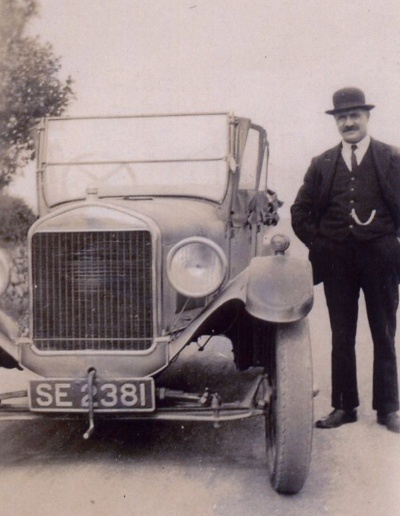The Arrival of the Motor Car
After World War One the private motor car began to become more popular, but only among relatively wealthy people. MacLennan’s garage in Main Street and McKay’s garage in School Lane were in operation, but from 1921 onwards, petrol pumps also appeared along pavements outside shops and hotels. Many of these remained well into the 1960s.
Three of the earliest motor cars (two-seaters) in Aberchirder. SE6 was the first, and the small boy in it is Donald McKay, presumably the son of engineer William McKay who ran his business at 127 Main Street.
All three cars show examples of the earliest registration numbers, which were first issued in 1903 – SE for Banffshire, SA for Aberdeenshire and SX for West Lothian.
(Picture courtesy of Phyllis Wright)
These photographs show three examples of motor transport in the 1920s and early 1930s.
The one at the right shows a couple – presumably Dod and Bell Hosie – in their car at the rear of 88 Main Street.
(Picture courtesy of Hector Hosie)
The two below are of blacksmith R D Stevenson and his son Waldie with their first Ford lorry in the 1920s and R D Stevenson with his Ford car at Yonder Bognie in the 1920s.
(Pictures courtesy of Sandy Stevenson)
The Square in the late 1930s, with a range of forms of transport – two bicycles, a motorbike, two cars and a lorry. Two trees are just visible beside the Jubilee Fountain, but there is no bus shelter.









